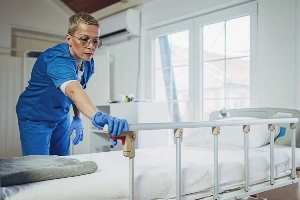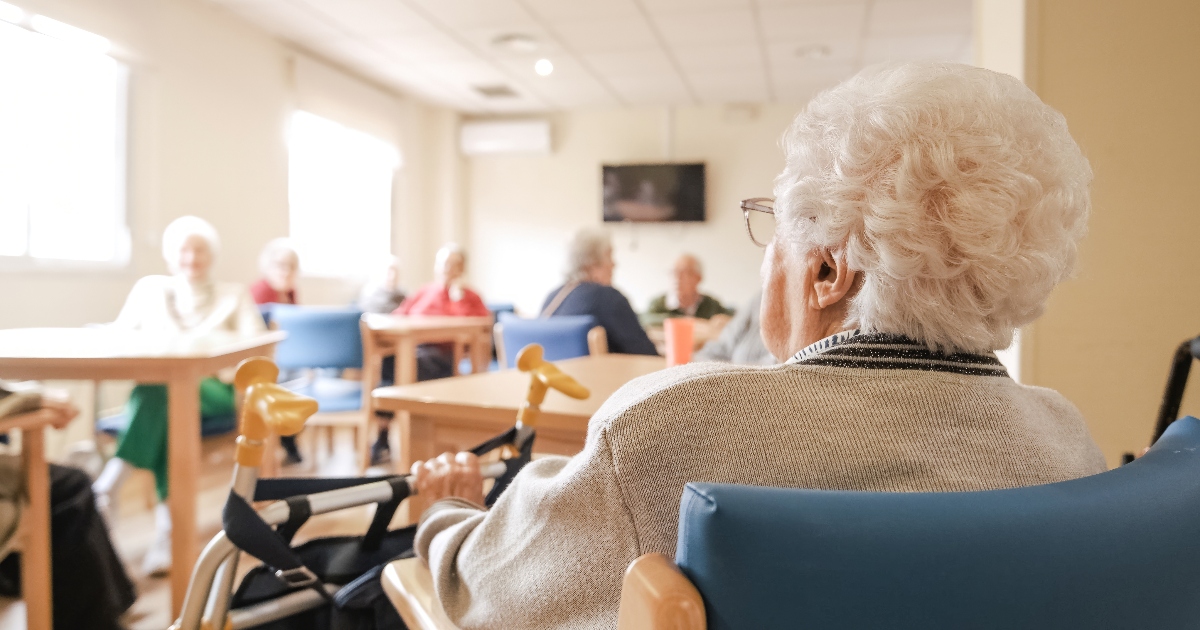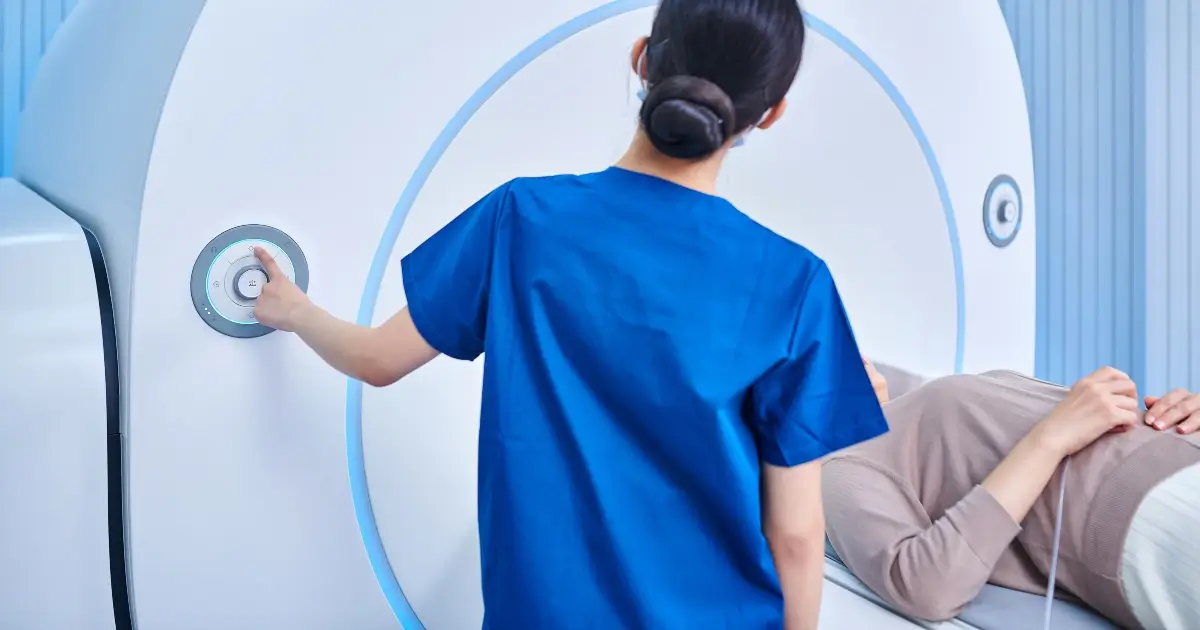
Bed rails can pose significant risks, especially to residents with physical limitations or altered mental status, such as dementia. When a loved one suffers from bed rail entrapment in a Santa Fe nursing home, the pain extends far beyond physical injuries.
At PKSD, we have helped Santa Fe families seek justice after nursing home abuse and neglect. If you suspect that your family’s health and well-being are compromised in a nursing home, seek legal counsel.
Our Santa Fe nursing home abuse attorneys are here to help you and your family understand your legal options. Schedule a free consultation with one of our attorneys today. Our firm does not charge any upfront costs for our legal services and only gets paid if we win your case.
Speak to our attorneys during a free case review: 505-677-7777.
Understanding Nursing Home Bed Rail Safety
Bed rail safety in nursing homes requires constant vigilance and proper protocols. These seemingly simple metal barriers serve two critical purposes: preventing falls and helping residents position themselves in bed. However, when improperly installed or maintained, they can turn from safety devices into deadly hazards.
The FDA identifies four zones where entrapment commonly occurs:
- Between the rail and mattress
- Through the rails themselves
- Between split rails
- Between the rail and headboard
Proper bed rail safety demands that staff regularly check these zones, ensuring no gaps exceed 4.75 inches, roughly the width of an adult’s head.
Are Bed Rails Safe in Nursing Homes?
Safe bed rail use starts with proper assessment. Not every resident needs bed rails, especially those with confusion or dementia. In some incidents, bed rails may increase injury risks. Nursing homes must evaluate each resident’s physical and mental condition before installing rails and reassess regularly as conditions change.
Key safety measures include:
- Installing bed rails according to manufacturer specifications
- Checking rail stability and attachments daily
- Ensuring proper mattress fit with no dangerous gaps
- Maintaining detailed documentation of inspections
- Training staff on entrapment risk identification
- Responding immediately to lost or damaged equipment
When nursing homes skip these essential steps, residents face serious injury risks. Warning signs of unsafe bed rail practices include wobbly rails, visible gaps between the mattress and rail, missing parts and staff unfamiliarity with proper safety protocols.
Modern bed systems have safety features like gap fillers and cross bars, but they are only effective when properly maintained. Santa Fe nursing homes have a legal duty to follow federal safety guidelines and manufacturer instructions for every bed rail in their facility.
Common Causes of Nursing Home Bed Rail Injuries
Bed rail injuries can happen for several reasons in a nursing home. Below are some of the causes of bed rail injuries:
Poor Staff Training
Many bed rail accidents stem from inadequate staff training. When nursing home workers do not understand proper positioning, gap measurements or warning signs of unsafe rails, residents face increased injury risks. Undertrained staff might miss critical maintenance issues or fail to recognize when a resident needs different safety measures.
Improper Installation
Even the highest-quality bed rails become hazardous when incorrectly installed. Common installation errors include:
- Rails mounted at the wrong heights
- Improper attachment to bed frames
- Incorrect sizing for the mattress type
- Missing safety straps or stabilizers
Inadequate Maintenance
Over time, bed rails can develop dangerous defects. Daily use loosens attachments, creates gaps and wears down locking mechanisms. When nursing homes skip regular inspections or delay repairs, these issues become serious safety hazards.
Wrong Resident Assessment
Not every resident need bed rails. Facilities must evaluate each person’s physical and cognitive condition before installing rails. Using bed rails for residents with dementia or confusion often increases injury risks rather than preventing them.
Gaps and Entrapment Zones
The most dangerous bed rail injuries happen in entrapment zones, spaces where residents can get caught between rails and mattresses. These gaps often develop when:
- Mattresses compress over time
- Rails shift out of position
- Wrong-sized equipment gets used
- Support systems fail
Missing Documentation
When nursing homes fail to track rail inspections, maintenance needs or resident assessments, problems go unnoticed. Proper documentation helps identify patterns of equipment failure and prevents repeat incidents.
Types of Bed Rail Injuries in Nursing Homes
If bed rails are not properly inspected or staff fail to recognize which residents need them, it could lead to serious injuries such as:
Entrapment Injuries
The most serious bed rail incidents involve entrapment, where residents get caught between rails and mattresses. These situations can lead to chest compression, making breathing difficult or impossible. When a resident cannot call for help or free themselves, entrapment can cause severe trauma or death.
Strangulation
A particularly devastating injury occurs when residents’ necks become caught in rail gaps. This can happen when confused residents try to climb over rails or slip between them. Even brief neck compression can cause lasting brain damage from lack of oxygen.
Fall-Related Trauma
While bed rails aim to prevent falls, they sometimes increase fall severity. Residents who try climbing over rails fall from a greater height, leading to:
- Broken hips and pelvis
- Head injuries and concussions
- Spinal cord damage
- Severe bruising and internal injuries
Compression Injuries
When residents get trapped against bed rails, they often suffer compression injuries, including:
- Nerve damage
- Deep tissue bruising
- Muscle damage
- Blood flow restriction
Skin Injuries
Extended contact with bed rails during entrapment can cause:
- Severe friction burns
- Deep pressure sores
- Skin tears and lacerations
- Tissue death in compressed areas
Psychological Trauma
Beyond physical injuries, bed rail incidents often cause lasting emotional damage. Residents may develop:
- Fear of going to bed
- Anxiety about being alone
- Post-traumatic stress
- Depression from loss of independence
Preventing Bed Rail Injuries and Deaths in Nursing Homes
Every nursing home in Santa Fe must follow strict prevention protocols to protect residents from bed rail injuries. Prevention starts with understanding that bed rail safety is not just about equipment. It is also about creating a safe environment for each resident.
Nursing homes must assess whether a resident needs bed rails. They can evaluate a resident by checking their physical mobility level, mental awareness, orientation, history of falls or climbing attempts.
Every shift staff should have a checklist to ensure rails lock securely in position, there are no gaps between mattress and rails, and all mounting hardware remains tight.
Santa Fe families should confirm these safety measures are in place during facility visits. If you notice missing or damaged rails, gaps around the mattress or other concerning issues, report them immediately to nursing home management.
Effective prevention also depends on well-trained staff who understand proper rail height and positioning, warning signs of equipment failure, emergency response procedures and when to request maintenance.
At times, the best prevention could be avoiding bed rails and finding other alternatives like:
- Low-height beds
- Floor padding mats
- Position cushions
- Bed alarms
- Increased monitoring
Contact PKSD After a Nursing Home Bed Rail Injury
At PKSD, we help Santa Fe families navigate through the legal process after a nursing home abuse incident. When nursing homes fail to protect their residents from these preventable accidents, you need to seek legal guidance. Your legal action not only seeks justice for your loved one but also helps protect other vulnerable residents from similar injuries.
Contact PKSD today for a free consultation about your loved one bed rail injury case. Our compassionate staff is here to answer your questions and help you understand your rights.
Call today to learn more about your legal options: 505-677-7777






